Sketches & Suitable Materials For Them
1)First sketch is actually a version made of my first sketch with minor adjustments. As we know there is a hierarchy between chess pieces.
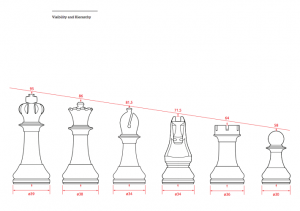
In my project, I’m aiming that I can give that hierarchy with number of node. (and also with height difference)
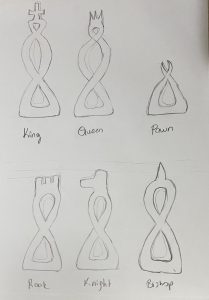
My pieces have got very organic shapes so I think most suitable material is either clay or dough.
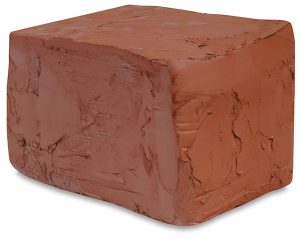
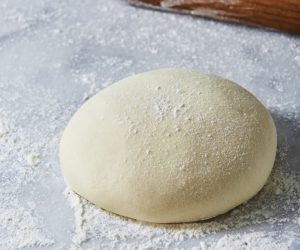
Also, aliminium foil or paper and glue mixcan also be used.
As for the separation of the two teams: If the dough is used, I think of providing two teams with food coloring or sugar paste of different colors.
2) Second sketch has also got a curved structure.
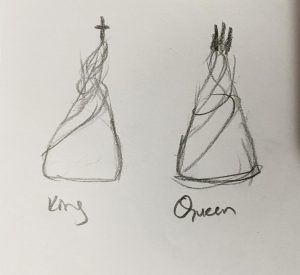
I think the most suitable for these shapes is candle or soap. By carving them, I belive I can create this curvy structure.
The details can be added with a different item since it will be difficult to engrave the small details on their heads. For example, with adding toothpicks.
3) I tried a bit modernize the pieces in that sketch.

I shortened all of them and left only the parts that distinguished them from each other, all of which were unique.
In addition, the parts can be divided into two and painted in different colors to indicate two different sets.
My material choice for this project again would be clay or dough.
Hi Ezgi,
The good thing in your first ideas was seeing the hierarchy and logic behind the construction of the each piece (e.g. transformation in length and final transformation in the head parts), although the top parts were still the traditional chess “heads”. However, we can not see much development form-wise. Below are some suggestions for improving your ideas:
You should make different alternatives about how these main curves could transform into the top-parts. The Pawn shows a more natural transition, rather than trying to “attach” certain forms. So, they shouldn’t really look like attachments, but convey a harmonic look/identity as a whole.
You may try to abstract the traditional geometries on the top. For instance, think about how you can give the feeling of a Knight by playing with the transformations of the upper curves, their directions, angles, intersections, height differences, etc. (This comment is valid for all pieces).
Be careful while using very thin and spiky forms in dough. You may come up with better alternative for the endings. –
By the way, may be your curves do not have to be such thin too?? We can not see them in 3D from your sketches, but you may also play with the sections of those cylindrical (?) curves.
For the new form,
Although still very raw, the curvy movements on the body part can be a good starting point to further explore as a relief. You can consider benefitting from different densities, angles, heights, bends, etc. (of curves) to set a certain logic for creating different chess pieces.
It doesn’t have to have a spiky end. Please make lots of sketches to explore the overall form, as well as the upper parts.
You may use toothpicks or such materials for the top part, but they should be in harmony with the main body (i.e. the decisions you are going to make about their placement, their relations with each other and the body, etc.). Again don’t think them only as an attachment. They can be “physically” attachments but, you can come up with a better visual language if you play with the main body’s form in a way that those materials on top should seem more relevant to your design.
Again, don’t just take the cross, crown, or horse head to give an identity to your chess pieces! The main body forms in those sketches can also transform into their top parts, if you don’t want to use extra toothpicks, sticks, etc.
The final sketches are like just using the traditional shapes, by cutting their body parts. By the way they are not modernized in their current forms as you said. You have to work on how to make them for instance more abstract, simple, may be minimal… It’d be better if you focus on the previous ideas and further develop them according to the suggestions.